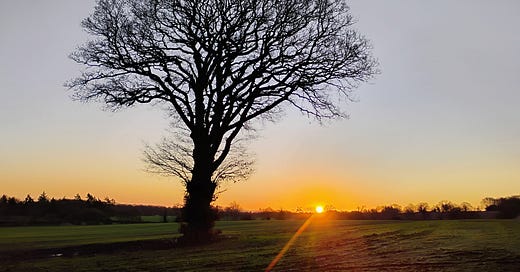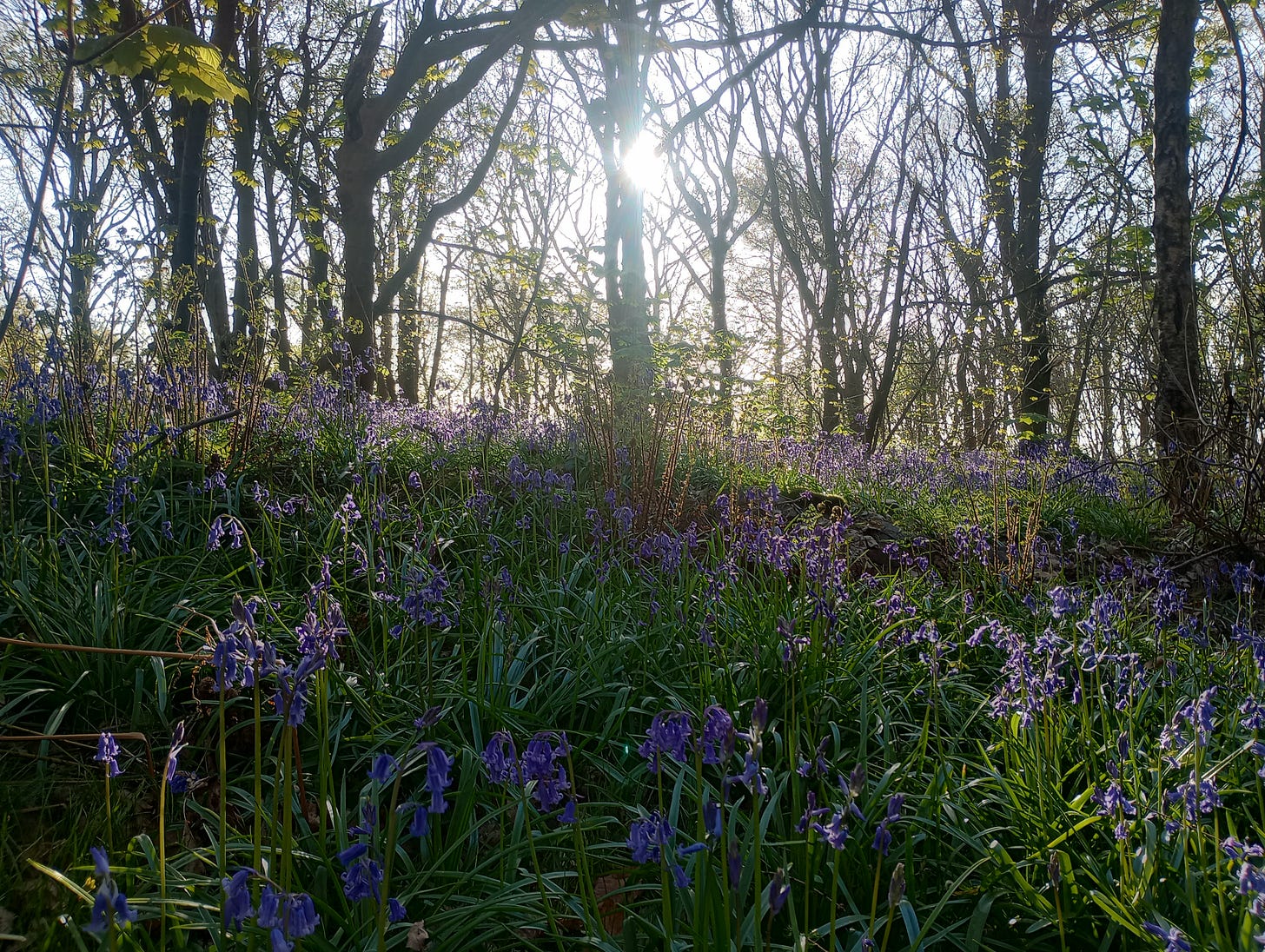Beating the bounds is an ancient custom, Anglo-Saxon in origin, and now only observed in a few places in Wales, England, and New England. Usually undertaken close to Ascension Day, it often involves a ceremonial procession during which walkers carry branches of willow and administer a‘thwack’ to key landmarks demarcating ‘their’ parish from its neighbours. Historically, children also played a key role. In some places they were ‘taught’ the route by having their heads dunked in a boundary stream or by getting them to leap over an obstacle or across a ditch (any consequent soaking or muddy discomfort was considered a useful aide memoire). It is a ritual claim of ownership and belonging, and its periodic repetition ensures that local knowledge is maintained and parish rights asserted.
For many years now I have been doing something which in its essentials is remarkably similar. Much like those who beat their parish bounds, I trace the lines and limits of home via circuitous routes a few miles in length and through which I mark out my own little corner of the world. I have had one such route – a regular and familiar run – at each of the four places I have lived, and their details remain clear in my memory.
Growing up on the Suffolk coast in the 1990s I would run the shingle shoreline before striking inland to circumnavigate the four main streets of my village, Kessingland. Named for a 9th Century Viking (old maps used to identify it as Keslande – the Land of Kes), it was once two distinct settlements, ‘Beach’ and ‘Street’, and in good East Anglian tradition the people of each community maintained a mutual hostility without any obvious or rational foundation (interwar housing developments would ultimately join them).
Later, when I went to University in Lancaster, I first made sense of my new home by running the boundaries of the campus before then venturing out to the trails beyond. I followed the canal, carved through the landscape in the 1790s, or ran the footpaths to the high ground – to the Victorian park on the moors above the city, or to the 12th Century castle which overlooks the Lune river and which gives the town its name: Lune-Castle corrupted over the centuries into Lancaster.
By the time I was transplanted across the Atlantic to the old steel city of Pittsburgh I had a well-practiced means through which to claim a home. Each morning, I would run several blocks from my apartment down towards the University’s imposing ‘Cathedral of Learning’, a Gothic tower that loomed out of the dark like something from Tolkien. One winter, I spent several weeks running this circuit through 3ft deep snow drifts.
This running ritual, an intrinsic part of my life for thirty years, remains with me today, and when my family and I moved recently to Leicestershire it offered a way to navigate the new. At least once a week (and with Topsy for company) I run a medieval trackway enclosed by hazel and hawthorn, past a grizzled old oak tree, and up into hills crowned with woods of pine and alder. Though the route I trace is already now very familiar, each season offers something different. In the winter, the paths become so inundated that running often becomes wading. In the spring, bluebells carpet the woodland. In the summer, wheat fields rustle in the breeze whilst skylarks pour out their soul above. And in the autumn the thin morning light is filtered by flurries of leaf-fall.
These are the bounds I have beat, the routes I have run. And within the arc described by my muddy footprints are the places I have called home.






I find walking or running a roughly circular route so much more satisfying than one that is there and back, although the latter can be much more predictable timewise. I often used that device when I was a consultant and trainer for a few years. I would run early in the morning from my hotel to the training venue and back, if it was near enough, to establish how long it would take to walk later. This served a similar purpose I guess, establishing my place in whichever city I found myself, and preparing me to meet a whole new bunch of people. It also usually gave me a useful anecdote to kick off my training or consultancy session with.
My bounds at the moment are the cemetery or the Scartho Circuit although I have just increased the distance slightly. I hope my new bounds are soon to become The Toll Bar Circuit. A nice off road one in the bounds of cemetery and Horsfield combined. All at Jeffing pace of course.